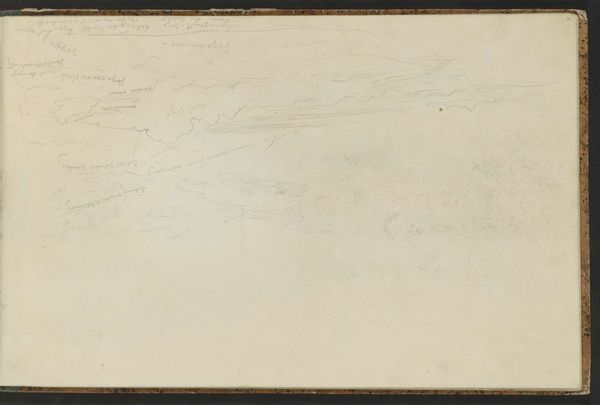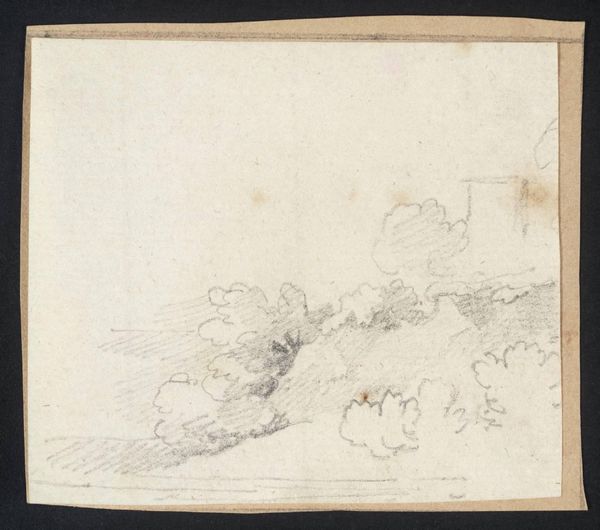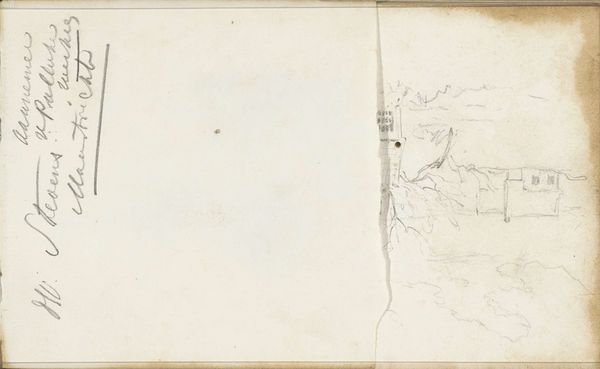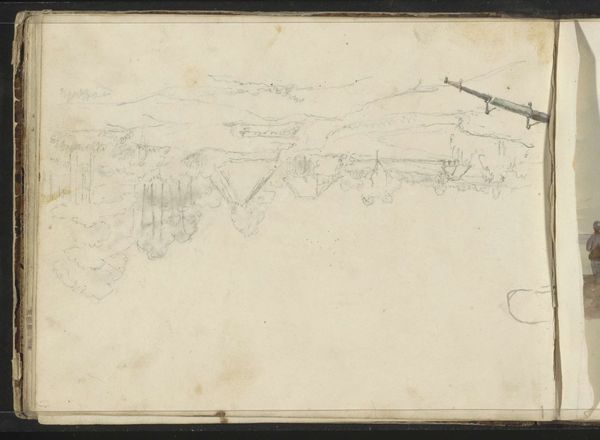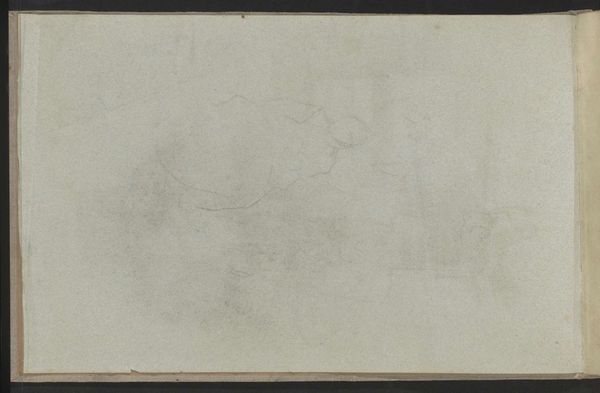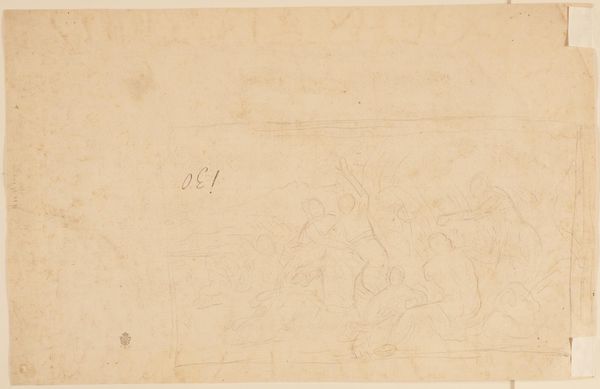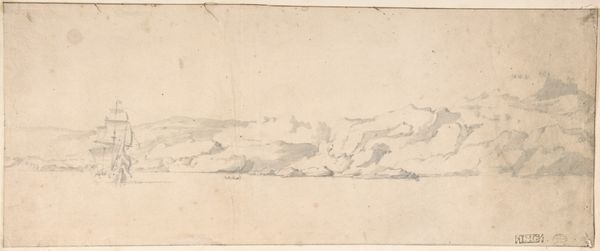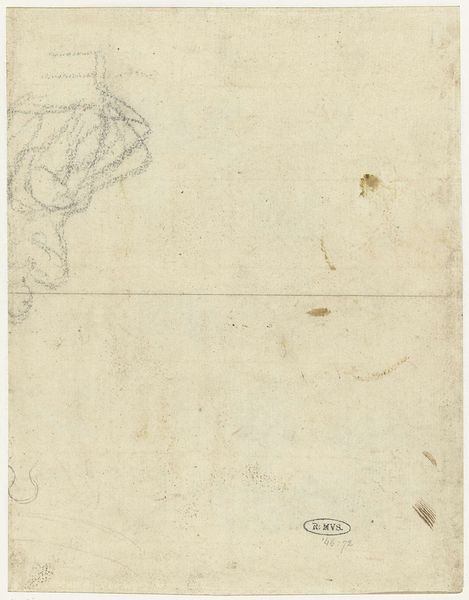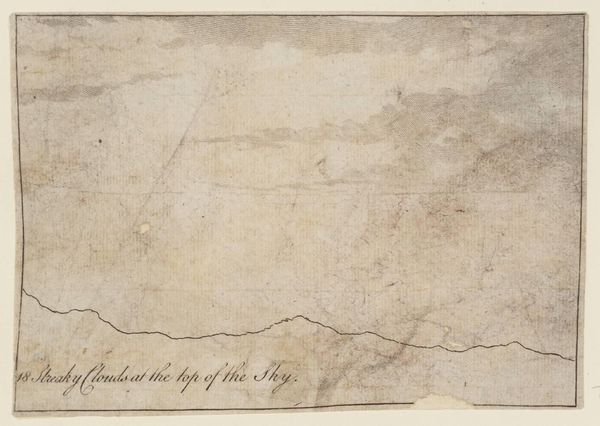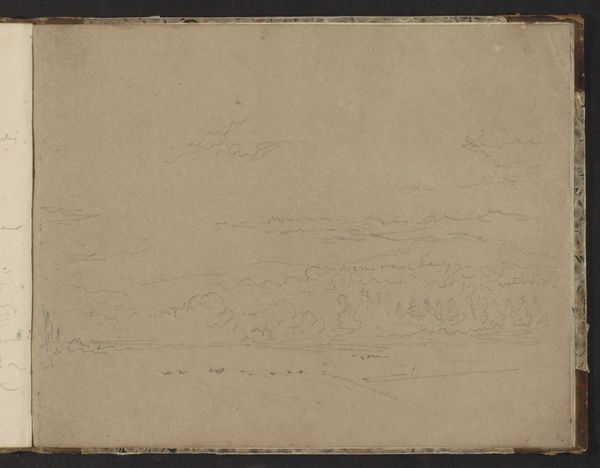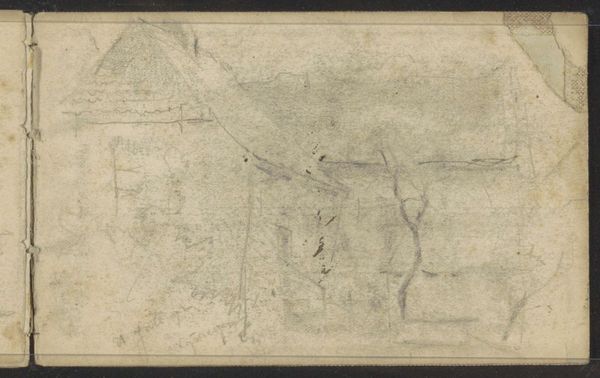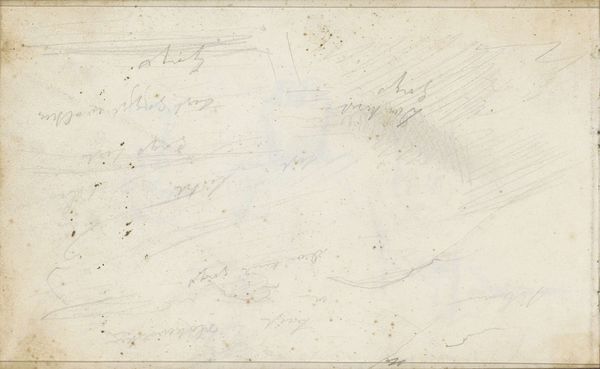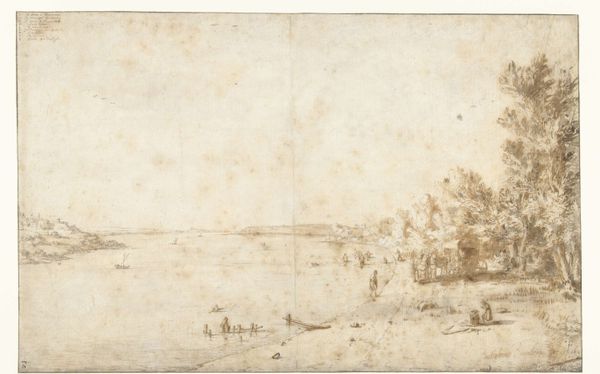
drawing, paper, pencil
#
drawing
#
landscape
#
paper
#
romanticism
#
pencil
#
watercolor
#
realism
Copyright: Rijks Museum: Open Domain
Curator: Ah, this landscape feels…empty, in a way that intrigues me. Stark. It’s a spread across two pages, giving it this strange intimacy, as though we’re looking over someone’s shoulder at their personal vision. Editor: You know, intimacy is interesting here because landscape art can have an impact related to power. So this image from around 1808 to 1857 depicts "Berglandschap met meer te Latium," or "Mountain Landscape with Lake in Latium," a pencil and watercolor drawing by Abraham Teerlink. The choice of Latium places it in a complicated legacy within art history, referring to the establishment of Western art and imperial grandeur. But I do wonder, is this an assertion or a subtle critique? Curator: That tension between grand vision and intimate experience, I think that's really there. Looking at the layers of light pencil lines, almost a whisper of color, gives this fragile effect like it might blow away. The artist really capturing the delicate details, while only suggesting a broader scene, inviting us to wander the paths that connect nature and identity in a very immediate and personal way. It makes me wonder: what meaning can we ascribe to such an elusive representation of power? Editor: Exactly, especially within the tradition of landscape art. By centering Latium in the frame, it demands an examination of that space's political and aesthetic power. If this work serves as a direct commentary or reinforcement of traditional imperial landscape depictions, particularly during the post-colonial periods, seems more vague in Teerlink's handling. The understated nature, if anything, seems to reject grandeur in favour of a sort of observational naturalism. Curator: Precisely! I see it as a way to embrace an almost proto-photographic style – where the imperfections become almost integral to how the image conveys feeling, making this seem less like a finished assertion and more like…a lived moment. So the questions it leaves me with are, where did Teerlink do this piece and for what end? Is it part of an exploratory sketchbook or a statement on power? The uncertainty is wonderful. Editor: I appreciate your perspective on that. And what resonates with me is the reminder of art’s role in negotiating cultural and social dynamics, its historical memory as we explore. The dialogue is continuous, right? It persists throughout time.
Comments
No comments
Be the first to comment and join the conversation on the ultimate creative platform.
